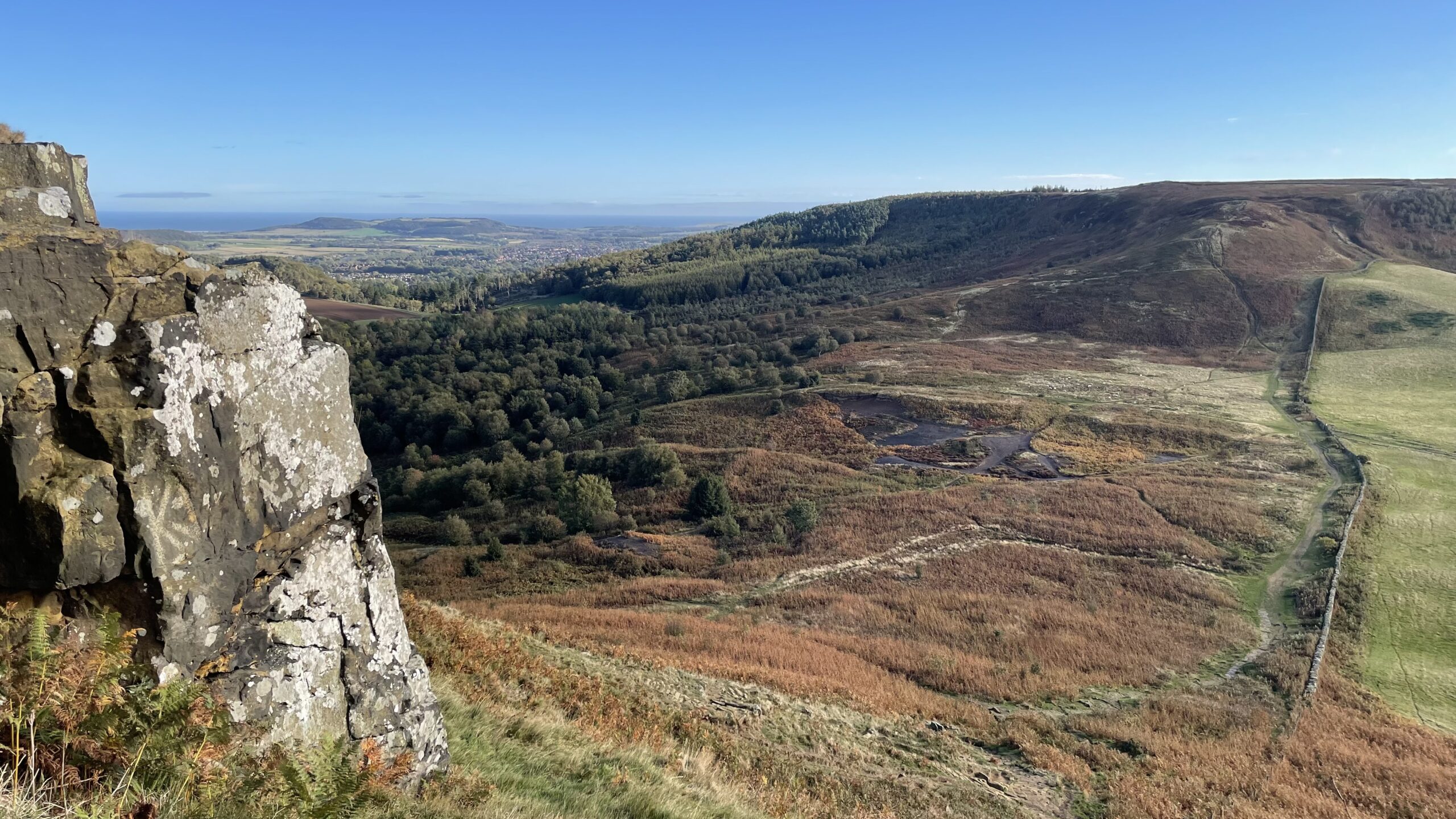Roseberry Common is, as its name implies, Common land. Once belonging to the Lord of the Manor of Newton, it was vital to village life. Here the people gathered fuel, grazed their livestock, and scraped together the means to keep both body and hearth alive through harsh seasons.
If you look closely, you may spot a flock of sheep grazing on the grass to the right of centre. They could well be carrying on that age-old practice of livestock grazing which has shaped and sustained this landscape for centuries. Then again, they might simply be escapees from the moor or from the fields of Aireyholme, which would be rather more in keeping with ovine character.
Grazing, intentional or otherwise, plays an important part in managing this upland. It keeps the bracken from swallowing the hills whole. Cattle would do the job more efficiently; sheep, being fastidious creatures, prefer not to trample the bracken at all. The National Trust has long wished to place a herd here, but even as the land’s owner it cannot act without the consent of every Commoner. Unfortunately, tracking them down has proved a task worthy of a detective. The old manorial estate has been divided and sold in fragments, and with it the memory of who owns what has dissolved into legend. Or so the tale goes.
Over time, the role of Common land has shifted in the public mind. What was once a lifeline for agricultural survival is now prized as shared open space, a source of recreation, air, and a faint illusion of freedom—our so-called “green lungs”.
By the 1830s and 1840s, as towns spread and cholera thrived, people began to see the Commons less as working land and more as places for “air and recreation”. This change of purpose laid the groundwork for new movements: the birth of the National Trust in the 1890s and, later, the campaign for public access known as the right to roam.

Leave a Reply